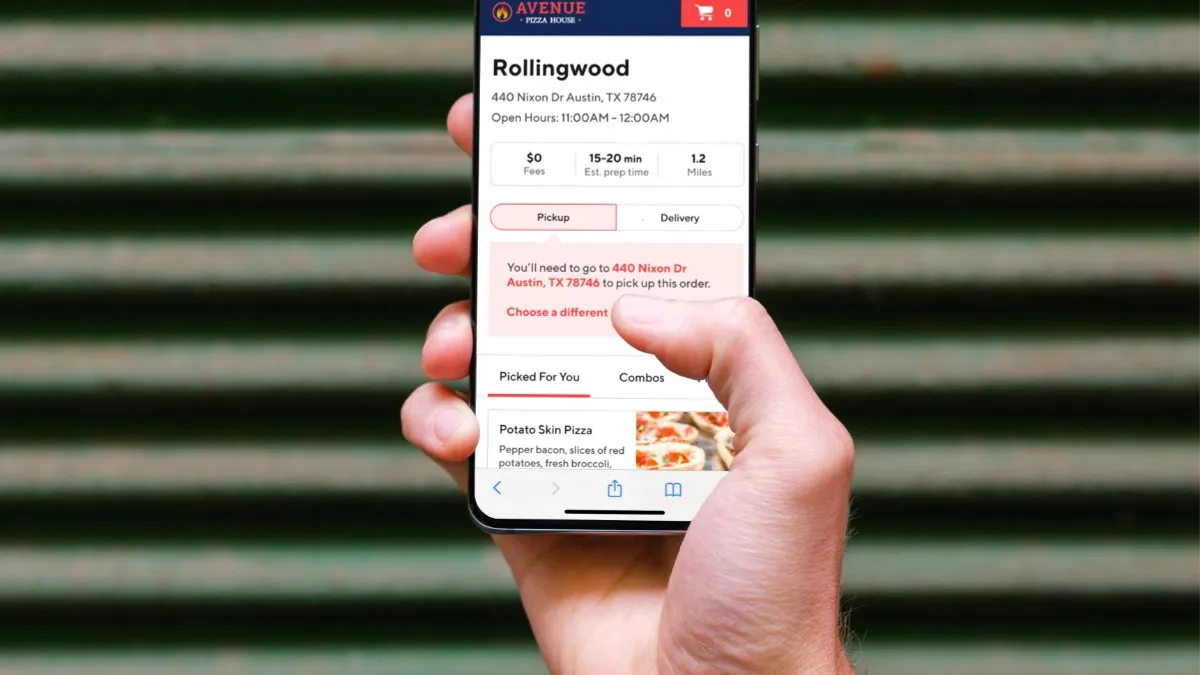Dive Brief:
- The Center for Science in the Public Interest sent a letter to the U.S. Food and Drug Administration Thursday requesting clarification on menu labeling requirements for menus listed on third-party delivery platforms like DoorDash, Uber Eats and Grubhub. At issue is whether or not those platforms are beholden to the same nutrition labeling requirements as chain restaurants with 20 or more outlets.
- The CSPI, joined by the American Heart Association, American Public Health Association, Center for Digital Democracy, Consumer Federation of America and Consumer Reports, claims that restaurant chains are failing to supply this information on their online menus featured by third-party apps.
- "Because TPPs play a large and rapidly growing role in the American food landscape, particularly during the COVID-19 pandemic and likely beyond, ensuring that restaurants provide nutrition labeling on TPP menus, as the FDCA requires, will provide important public health benefits," the organizations state in the letter, adding that failure to provide this information undercuts "the public health goals of nutrition labeling."
Dive Insight:
The consumer groups pointed to Chipotle as an example of the nutritional "information gap" that exists on brands' third-party delivery menus. Consumers can view calorie amounts for menu items on Chipotle.com, but not on Chipotle's menu listed on DoorDash.
This phenomenon could become frustrating for diners as nearly every major restaurant chain now exists on a third-party delivery app, but their nutritional details may not have carried over to those specific digital menus. Growing delivery demand could exacerbate this information gap, as well. According to The NPD Group, delivery orders from restaurants were 154% higher in January 2021 than they were in January 2020, for example. The CSPI adds that 80% of non-pizza orders were conducted through a third-party delivery provider since the start of the pandemic.
The CSPI states that the effort to close this gap is important as rates of obesity and related chronic diseases have grown significantly throughout the past several decades. Menu labeling has "modestly" reduced calorie intake, according to the organizations. The CSPI and letter co-authors also argue that disclosure of this information may incite companies to lower their calorie counts.
A challenge with the CSPI's goal, however, is understanding whose responsibility it is to ensure calorie counts are included on third-party sites — the restaurant chain or the delivery company. A DoorDash spokesperson told The Counter that the company gives its restaurant partners the ability to include this information, while an FDA spokesperson told the publication that third-party companies "likely would not meet the definition of a covered establishment under current requirements, and therefore would not be subject to menu labeling requirements."
The absence of nutritional information on delivery apps could also relinquish the growing number of virtual brands — which only exist on delivery platforms — from menu labeling. This could give these brands an unfair advantage over brick-and-mortar restaurants beholden to the law. When menu labeling went into place as an amendment to the Affordable Care Act in 2010, the FDA estimated that 1,640 unique chains would have to comply, with the average cost per chain predicted to be $45,720.
There are reportedly around 100,000 virtual concepts available only through digital channels, and several of those concepts have well over 20 "locations" among them to fall within the FDA's mandate. Bloomin' Brands' Tender Shack, for instance, now has 725 locations, while MrBeast Burger has about 300 locations.
The CSPI wants restaurants and third-party companies to be jointly responsible for providing this information, as long as it's included somehow. Eva Greenthal, a senior science policy associate at CSPI, told The Counter the third-party platforms can decline to post menus that don't include all of the information required by law.
"Because restaurants generally develop and control the menu that consumers view on TPPs, there is no legal distinction between the restaurant's online menu and the one it develops for TPPs," the organizations wrote in the letter.









